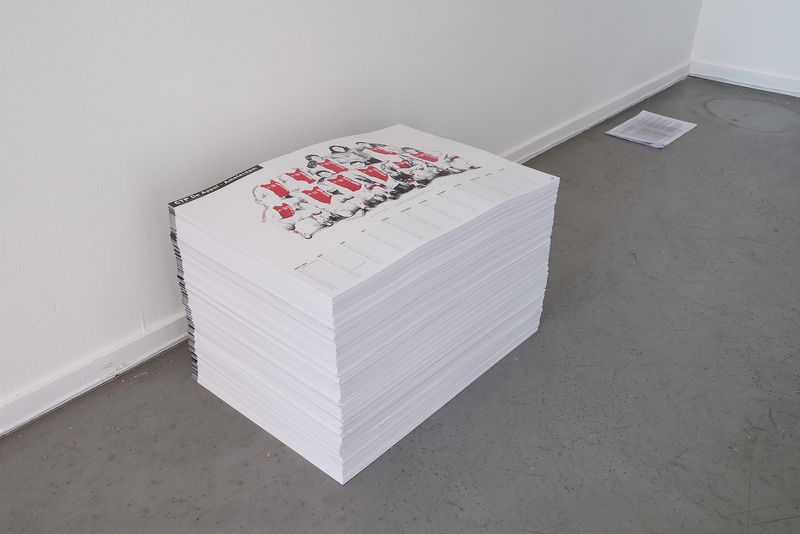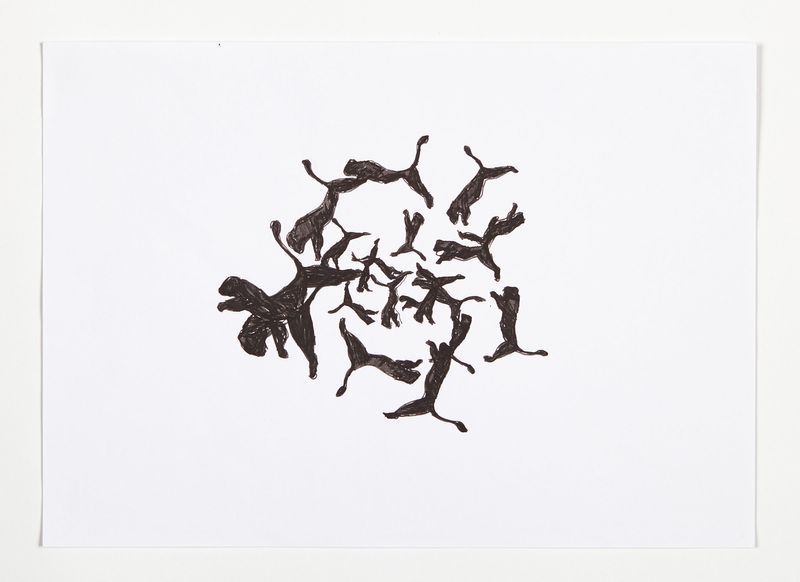The Draughtman’s contract(2002 revised 2016)
Amel Ibrahimovic was himself once an active footballer in his native Bosnia, and even managed to play in the national under 21 squad - a team that was since dispersed during the civil war. As a refugee in Denmark he took an interest in art, and soon started making drawings from old photos of himself and his friend and former teammates playing football. Or sometimes just drawing the motifs from memory. This was an act of remembrance and commemorance, since he had lost touch with most of them, as they became spread across Europe in various refugee camps. Some he simply lost track of, whereas others were gone for good, having died in the war.
After this initial series, Ibrahimovic began drawing all the national teams of the Euro 2000, but with famous artists replacing the footballers. A seemingly nonsensical act, that nonetheless mirrored the replacement of his former friends and colleagues for imaginary new ones of the art world he now entered as an art student. Whereas he was projecting his lost and imaginary past into the series with Bosnian Youth Players, he was now projecting his unknown and imaginary future into art star series. These drawings, then, represent a double movement: back to the future. As such they are also locked in a double bind, and supplied with an ethical imperative - as if he is indeed continuing the halted lives and fragmented existences of his peers into the art world. The migratory experience: A new career in a new town. And it is this double bind that drives Ibrahimovic's drawings - an ethical imperative to speak for the dead: The Draughtsman's contract.




